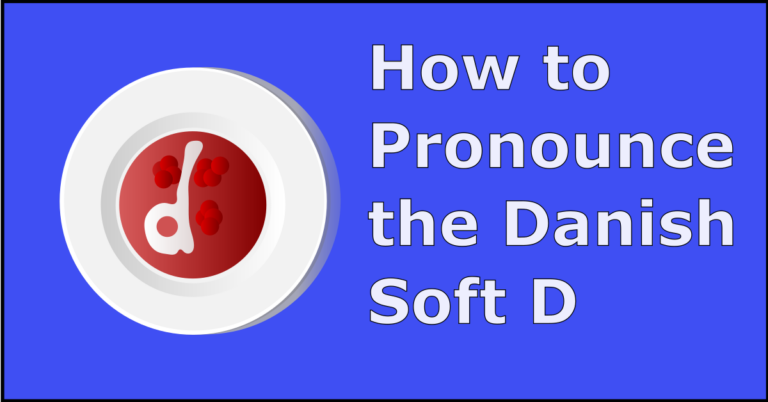How to Pronounce Æ in danish

One of the ‘funny’ vowels you will find in many Nordic languages, learning to pronounce Æ will not only help you to speak Danish but also improve your listening skills by being able to differentiate the Danish vowels.
The fastest way to pick up new vowel sounds is to understand how vowel sounds are made. Check out this intro to vowels for an overview of how we make vowel sounds in any language.
As with all Danish pronunciation learning, it is important to realise that the letter Æ in Danish does not only represent one sound. Just like in English, the letters on the page are not always an exact transcription of a particular sound. In this article, we will go through the main sounds that Æ can represent. However, if you want to improve your pronunciation in general, it is perhaps better to focus on the sounds of Danish, rather than the letters.
The letter Æ in Danish represents a few different sounds. Linguists call these sounds phonemes, and use a different alphabet to represent them. To make matters even more confusing, Danish phonology is often written differently to the International Phonetic Alphabet. For this reason, the best way for us to look at this is to get an idea of how we make the different sounds and listen to some examples, without focusing too much on the symbols. The main sounds associated with the letter Æ are the phonemes /ɛ/ or /e/ and /ɑ/ or /ɑ̈/.
Let’s look at how to pronounce it.
The Æ Sound
As outlined here, there are 3 things that we do to make different vowel sounds. They are: the position of our tongue (front to back), the position of our jaw (close to open) and the shape of our lips (rounded or unrounded).
The vowel diagram below is a representation of a mouth. Imagine it as a side view of a face looking to the left. The letters on the left hand side are with the tongue at the front of the mouth, the letters on the right hand side are with the tongue at the back of the mouth. The letters at the top are with the jaw closed and at the bottom with the jaw open. Letters written on the left of the line are unrounded, and on the right are rounded.

So we can see that for the /e/ sound, the tongue is at the front of the mouth, with the jaw fairly closed, and with the lips unrounded. One way to reach the /e/ sound would be to start from the /I/ of the word ‘it’ and open the jaw/lower the tongue a little bit.
The /ɑ/ sound is with the jaw open/tongue lowered, and the tongue slightly further back. It is also unrounded, so the lips are relaxed. One way to reach it could be to follow the movement of the tongue between the vowel sounds of the words ‘hat’ (in an American accent) and ‘thought’, then find somewhere in between. It helps to open the mouth wide.
Examples of the Æ sound
The /e/ sound appears in many words. Sometimes it is a little shorter as in kæft, other times it is longer, as in sjæle.
The /ɑ/ sound is more likely to appear after an ‘r’, in words such as kræft and græde.
These examples will help get you started in your practice and understanding of the Æ pronunciation. As with all Danish pronunciation, I highly recommend that you focus on the sounds and getting to know how to make different vowel sounds generally, instead of getting bogged down in the details. It may seem complex at first, but with a little practise, and active listening, the different sounds will soon start to distinguish themselves.






